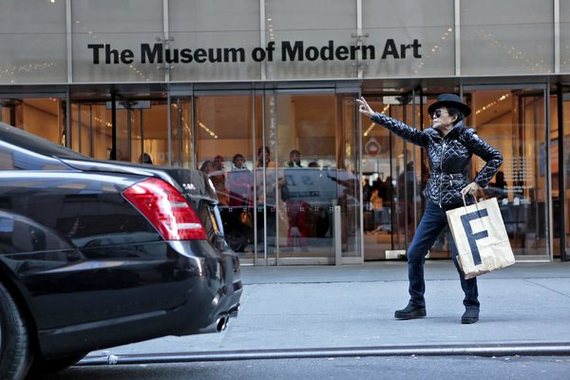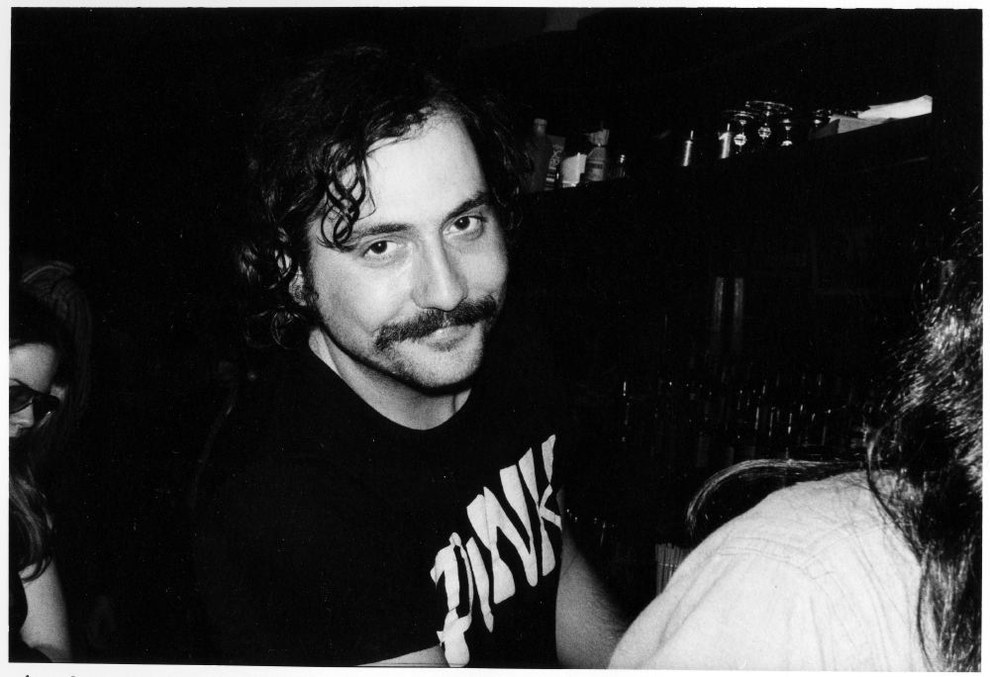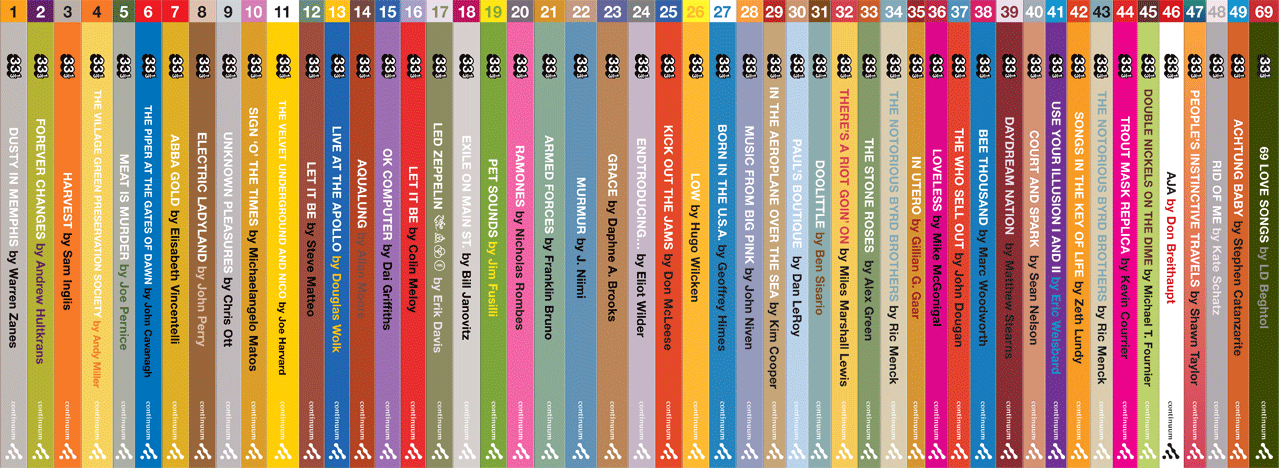Next week we'll conclude the first half of our semester with
Maggie Nelson's Bluets, and that book will not just serve as an opportunity to work closely with another book-length text, but also to closely analyze a key model for the project that will take up the second half of the semester. We've talked about this before, but now we'll lay out all of the details regarding theme, writing guidelines, scheduling, etc.
Theme
Over the course of weeks 8–15 you'll all take part in an online writing project housed
here, and as we've already discussed, we'll be showing Bearcat spirit with our chosen theme of "Red and Black." Much as the color blue serves as the central organizing factor for Nelson's book, these two colors (individually, or perhaps together) will be the common denominator for the writing you'll do. Instead of thinking of that as a limitation, you should see it as a liberating factor, allowing you to use your own interests and imaginations to come up with some very unique topics to write about — and there will be a need to think individually and come up with out-of-the-ordinary topics, since there'll be more than 100 posts by the end of the project and students can't double-up. Likewise, you can't do more than one of a certain type of response (more on that below) so you will need to cast a wide net. Doing so will also be an opportunity to interrogate your identity, tastes, learning habits, and cultural contexts as well as a chance to data-mine your bookshelves, record collection, favorite movies, etc. for things that will fit the theme. Last-minute hunting probably won't serve you well; instead carry those colors with you, brainstorm lists of potential topics, and keep an eye out for moments of sudden inspiration.
Response Types
Generally speaking there are 8 different types of responses you might write, though in execution some of these might overlap in terms of methods and/or modes:
- a close reading of a short literary work (i.e. a poem, a short story, a scene from a novel or play, etc.) or a limited facet (i.e. a character, a major plot point, a key quote, etc.) of a larger work
- an annotated bibilography-style analysis of a longer literary work that encompasses broader themes, symbolisms, etc.
- an explainer-style response on any sort of cultural artifact, news story, historical event or person, etc.
- an etymological exploration of a word, phrase, meme, etc. (its history, diversity of use, and so forth)
- an analysis of an audio recording (music — a song or an album — or not-music)
- an analysis of an art work (or any sort of static image: advertising, book covers, packaging, diagrams, etc.)
- an analysis of a moving image (video, film, animation, GIF, etc.)
- an exploration of an object
I'm also open to other sorts of responses — float an idea by me and see what I say. You might also notice that many of these possibilities correspond to the individual classes we convened between the Eaglestone and Rankine books, and that's precisely why we "did" poetry, audio, video, visual arts, objects, and words: to give you models and tools to help you in this stage of the class.
Response Details
Your responses should be approximately 500 words, though that could vary wildly — the goal here isn't to meet a minimum word count, it's to write effective and engaging hybrid prose that's simultaneously personal and critical. There's no place for filler here. In your pieces you should be sharing your opinions, but also moving beyond that to offer up a form of analysis, or an argument, or convincing your reader of a given point or position, and the best way to do that is with copious evidence from the texts themselves. You can (and certainly should) have fun, be weird, take risks, commit daring stylistic feats, and even exploit tenuous connections to the theme, but remember to make a point as well. Without that, your piece is incomplete. Towards that end, I'm open to students doing one response in a non-written format — podcast, video, cartoon, infographic, etc. — provided that it meets the same critical aims (and do write me in advance to run your idea by me).
You'll be responsible for writing a total of four pieces during the semester — one during each of our four workshop rounds — and as I've stated above you can only write one piece of a certain type during those rounds (i.e. you can't write three music reviews), though you will be permitted to double-up on response types when you write two additional pieces for your final portfolio (more on that later in the semester). Topics will be reserved for each workshop round through a thread on our class Facebook group, and will be first-come, first served. It's your responsibility to check to make sure you're not duplicating what someone else posted, and you should wait until you receive a "like" from me, which will signify my approval of your proposed topic. You should also state the response type for your proposed topic.
Responses must be posted to our blog no less than two days prior to their workshopping (i.e. before our class meeting on the class day before a Wednesday or Friday workshop, or before 1:25PM on Saturday for Monday workshops) and should be cleanly formatted, cited, etc. accordingly to our
writers guidelines. I highly recommend working in Word and then pasting your piece into Blogger and reformatting accordingly (vs. writing directly in the site), which will save you headaches if your browser crashes, you lose wi-fi, etc.
(Peer) Participation
Because of the sheer number of students in this class, we're going to need to move quickly as we workshop each piece (I'm estimating 8 minutes total per student) and that means that everyone is going to need to be prompt, brief, and to-the-point with their in-class feedback (which also presupposes that you've read the day's posts at least once and are familiar with them). To make the process easier, each student being workshopped on a given day will have a lead reader chosen at random, and this student will be responsible for getting our discussion off to a quick start with a few comments. These three criteria are an excellent (and simple) way to frame your reaction to a given piece:
- Is this response effective? Is it interesting? Why or why not? Note specific details(!)
- Comment on the use of evidence: is it sufficiently clever and/or convincing?
- Are there any major questions that remain unanswered for you or concerns that you have?
The lead reader will also bring two copies of their responses to these questions on the day of the workshop: one for me, one for the author. Being absent on your lead reader day (or on the day your writing is being workshopped) is not recommended without serious extenuating circumstances and grades will be docked accordingly.
Finally, while it should go without saying, our workshop should be a place for constructive criticism rooted in mutual respect and guided by a desire to learn about and improve our own writing processes while helping others do the same.
Grading / The Progressive Approach
Feedback is more important than grades, but during the workshop portion of our semester I will be giving students grades for each of their pieces on a simplified scale: essentially ✓, ✓+, ✓-. Letter grades will only be given for your final portfolios, but this should offer you some sort of sense of how you're doing. Because honesty and growth are important, there will be no grade inflation here, but if you get a ✓- it will come with some concrete ideas on how to do better next time. In general, this progressive approach should guide your efforts this semester, and while that's a double-edged sword, it is so in a positive manner: you should aim to make improvements (whether small or large) as you progress through the four workshop rounds, and that means that a poor showing in early rounds will have less of an effect on your final grade than exemplary work later in the term.
A brief word about the final portfolios — which will be due during exam week, and which we'll address more directly later in the semester. They'll consist of the following things:
- revised versions of each of your four posts, plus the original versions of each
- two new pieces written in the same fashion as your online posts (n.b. you can repeat response types here)
- a brief personal statement on what you've learned throughout the writing and workshopping process
Scheduling
About a week before each new workshop round begins I'll post two things: a topic sign-up thread on our Facebook group and a schedule with the writers and lead readers for each day of the round. Schedules and lead reader match-ups will be chosen randomly (using
random.org's list randomizer) with slight adjustments made if someone draws themselves as their lead reader. I'm willing to make accommodations for students who contact me with pre-scheduled serious reasons for absences. Random is random (and the fairest and quickest way to organize schedules) so please don't get angry or take it personally if you don't like the day or lead reader you get assigned.
Technical Details
You'll each need to be added to the blog as authors, which means you'll need to give me your preferred e-mail address — if you have a Gmail address that would be best since it's integrated with Blogger. You'll be responsible for loading your content into the blog, making sure it's formatted properly, embellishing it as necessary (with images, audio-visual content, etc.), choosing an eye-catching headline, and posting it by the deadline. This is a great opportunity for you to also learn a little bit about coding and html (particularly when you need to add special symbols, diacritically-accented characters, etc.). You'll also need to co-exist peacefully with your classmates in the blog's back-end among their published and unpublished posts. Towards that end I propose these two practices:
- Your post titles should always begin with the date it will be published followed by a colon.
- Your last name should come after the colon when your piece is unpublished; you should add your proper title just before publishing
Therefore one of my posts would be listed as "10/1: Hennessey" until I'm ready to publish it, when I can change the title to "10/1: One Weird Trick to Pass ENGL 3000"
Any acts of sabotage against classmates or their writing will be met with righteous anger, hellfire, and brimstone. As a failsafe, once your piece is ready to publish you should go into the HTML view, copy the complete code for your piece, paste it into a RTF document (via TextEdit on a Mac or Notepad on a PC) or a Gmail entry, and then save it (so that you can easily reconstruct a post in the rare chance that something happens).
Finally, if your login/Gmail address isn't clearly your name you should be sure to sign your posts at the bottom.
Trial and Error
We'll all be navigating this unfamiliar process together, and so while I'd like to think everything will be easy, I'm not that foolish. The biggest learning curve, for some of you, will be getting used to working with Blogger, and I recommend you start familiarizing yourself with the toolbar buttons sooner rather than later. Play around with dummy text, try out different formatting options, practice using the "remove formatting" button to clean up bad code, and so forth. As someone who's been paid to do web work for the past eight years, I've always consoled myself with the fact that — much like The Matrix — the web is made out of the stuff that the web is made out of . . . which is to say that you can quickly and easily find all sorts of help, tutorials, lists of codes for special characters, etc. with a quick search. I'm also here to help and so is your larger class community, so don't hesitate to post questions in our Facebook group or e-mail me.


























